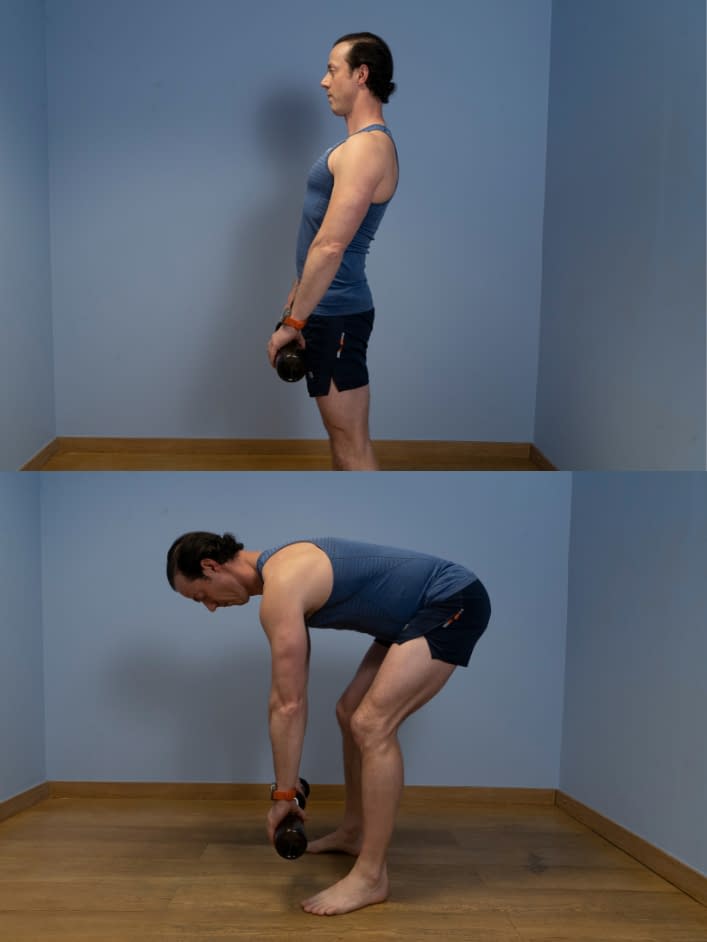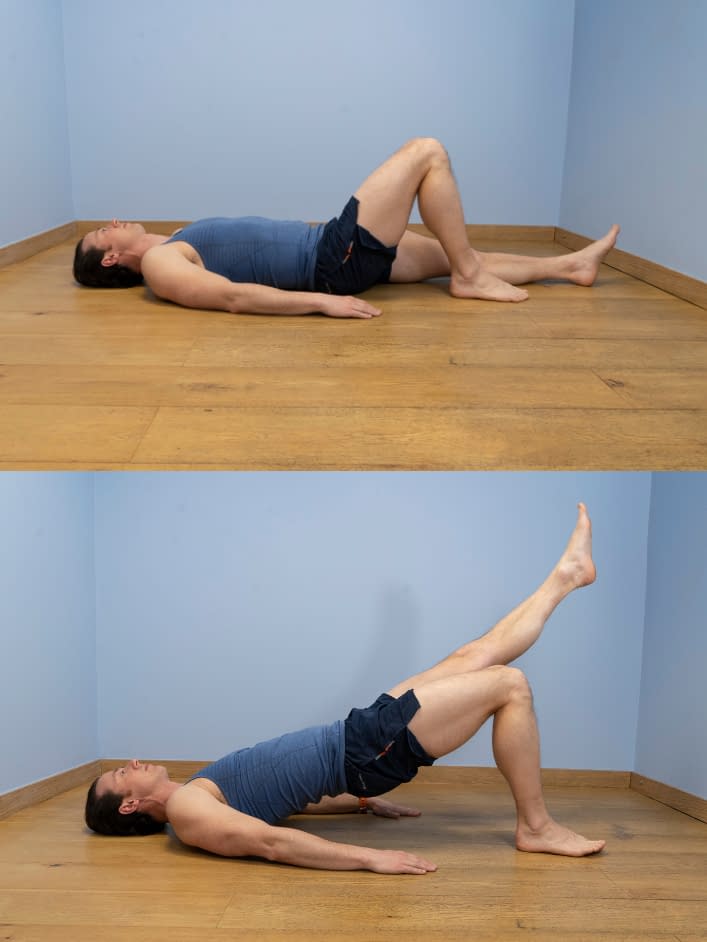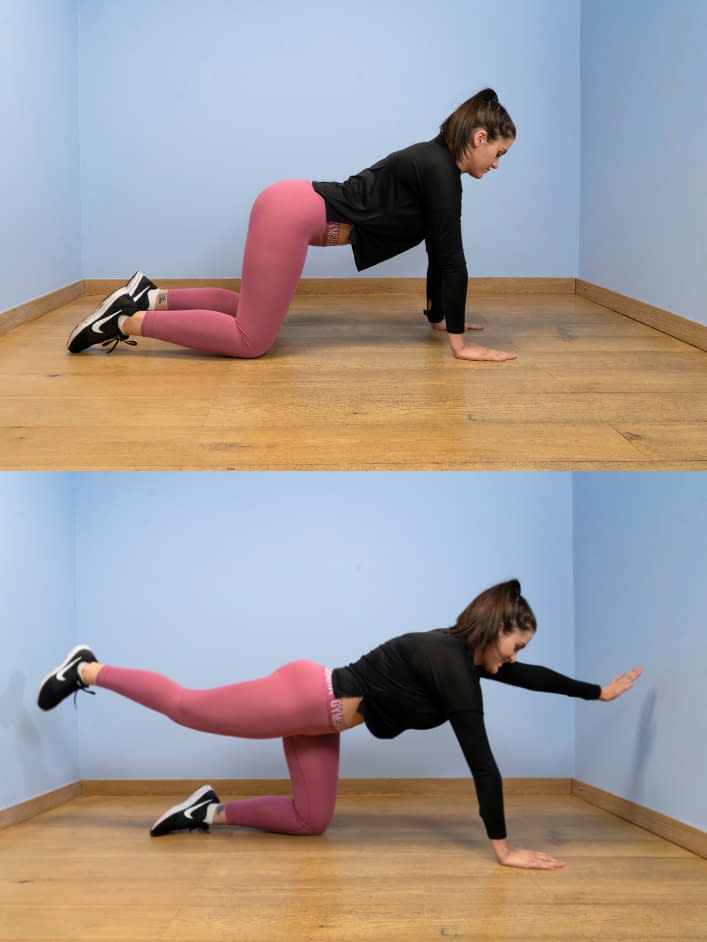Spondylolysis Advanced Exercise Programme
Aim to perform this programme a minimum of once per day unless prescribed otherwise. As with any new exercise, start slowly (repetitions as able) and build up as you are able within the guidelines below.
Pain should not exceed 3/10 whilst completing this exercise programme.
1. Deadlift
- Stand upright with feet hip-width apart, a slight knee bend and a weight held in both hands.
- Engage the abdominal region and in a controlled manner, bend forward at the hips trying to keep your back straight. Do not let your knees bend further. Let your hips press out backwards.
- Go down as far as you feel comfortable or until your back starts to round.
- Come back up to standing and repeat.
2. Bridge with leg lift
- Lie on your back on the floor or bed with your knees bent at 90 degrees, your feet on the floor and your arms down by your side.
- Push your heels down into the floor to gently lift your hips upwards. Lift as high as you feel comfortable but no higher than a straight line between hips, knees and shoulders.
- If you feel discomfort, then try squeezing your tummy and bum muscles before starting the lift.
- From this position, lift one leg slightly off the floor and return.
- Repeat on the opposite side.
- Try and keep the pelvis still.
3. 4-point kneeling superman
- Start on your hands and knees.
- Make sure that your back is straight, your hands are under your shoulders and knees under hips.
- From this position, straighten one leg out behind you with the foot slightly off the floor.
- Return back to the start position and repeat with the other leg.
- If this feels easy then you can add the arm. Do this by straightening the opposite arm in front at the same time as the leg.
We recommend consulting a musculoskeletal physiotherapist to ensure exercises are best suited to your recovery. If you are carrying out an exercise regime without consulting a healthcare professional, you do so at your own risk. If you have any concerns whilst completing these exercises, please contact a healthcare professional.
More Plans
This programme will begin the process of increasing the strength of the muscles around the lower back, abdomen and pelvis. It should be performed regularly as the level of exercise is quite light. This should not exceed any more than 3/10 on your perceived pain scale.
- 0
- 1
- 2
- 3
- 4
- 5
- 6
- 7
- 8
- 910
Here the exercises progress to more challenging positions and increased effort level. This is with the aim of increasing the strength in the area. This should not exceed any more than 3/10 on your perceived pain scale.
- 0
- 1
- 2
- 3
- 4
- 5
- 6
- 7
- 8
- 910


